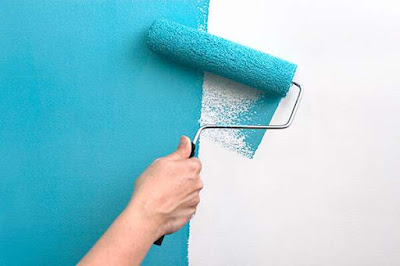Manufactured or Pressboard Furniture
Manufactured furniture, also known as ready-to-assemble (RTA) furniture, contains formaldehyde, which is a known carcinogen. Formaldehyde acts as a preservative for pressed wood, and therefore is widely used in desks, bookshelves, hutches, beds and cabinetry, as well as in building materials including plywood, OSB, MDF and particle board. One way to reduce your exposure is to purchase solid wood furniture. Short on cash? Look for used solid furniture with a damaged coating and refinish! Furniture refinishing has never been safer when you use low VOC skin safe removal products try this https://maxstrip.com/how-to-remove/varnish/
Mothballs
That smell that drives the moths away is due to dichlorobenzene, a VOC commonly found in moth repellents and other deodorizers. For a natural alternative, use cedar chips or lavender sachets.
Nail Polish Remover
The active ingredient in nail polish remover is the VOC acetone, which also is found in some types of furniture polish. To minimize exposure, look for acetone-free nail polish remover and water-based substitutes in furniture polish. A great alternative to nail polish remover that can safely clean up drips and spills but also remove it from your nails try this https://maxstrip.com/how-to-remove/nail-polish/
Dry Cleaning
The process of dry cleaning uses a VOC called perchloroethylene, which accounts for the strong chemical odor that comes from freshly-cleaned clothing, draperies, and upholstery. Make sure to air out dry-cleaned products thoroughly before storing, wearing, or using them.
Paint
Freshening up your walls shouldn’t make you sick…but using paint that contains toluene can give you itchy eyes, nose and a sore throat. Whenever possible, choose paint without toluene. You should also always make sure to open windows and doors to allow fresh air to circulate during any painting project. For safe alternatives when cleaning up your paint messes try this https://maxstrip.com/how-to-remove/paint-spills-overspray/
Carpeting
Carpeting, padding, and the adhesives used in installation may contain several types of VOCs, including dichloroethane, ethyl benzene, styrene, toluene, trichloroethane, and xylenes. The EPA recommends that carpet be thoroughly aired out before installation, and that all of the windows remain open during installation and for 48 to 72 hours after installation. Regular cleaning also will help reduce VOCs.
Aerosol Spray Paints
If you use spray paint to spruce up your home décor or work on a craft project, you may risk exposure to a VOC called methylene chloride, which can cause symptoms similar to exposure to carbon monoxide. Use these products outdoors whenever possible; if you must spray paint indoors, make sure the area is well ventilated. For safe alternatives when cleaning up your paint messes try this https://maxstrip.com/how-to-remove/paint-spills-overspray/
Scented Candles
Many people enjoy the cozy ambiance of a sweet-smelling candle burning on the table, but some scented candles contain VOCs, including butanal, benzene, alpha-pinene, and limonene, which reacts with ozone in the air to form formaldehyde. And, in spite of being banned by the EPA, some candles still have lead wicks, which release lead into the air. Look for candles made of beeswax or soy, with 100% cotton wicks.
Cleansers & Disinfectants
Many common household cleansers and disinfectants contain multiple VOCs, including ethylene glycol, propylene glycol, butoxyethanol, isopropyl alcohol, glutaraldehyde, ortho-phtaldehyde, chloramines, ethylene oxide, quaternary ammonium compounds, limonene, and pinene. Aerosol cleansers and disinfectants release the highest levels of VOCs. Switch to natural cleansers, make your own using baking soda, white vinegar, lemon juice, salt and Castile soap or try this https://maxstrip.com/how-to-remove/dirt-grime/
Cigarettes
Smoking can put you at risk from a complex cocktail of hazardous VOCs, including benzene, ethylbenzene, styrene, toluene, and xylenes. Vaping is no safer, as e-cigarettes have been found to contain the same harmful VOCs. Household exposure to second hand smoke can have a deleterious effect on children and other family members…giving smokers one more reason to kick the habit.














